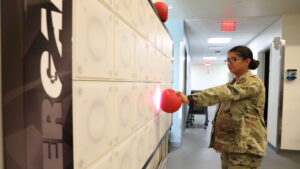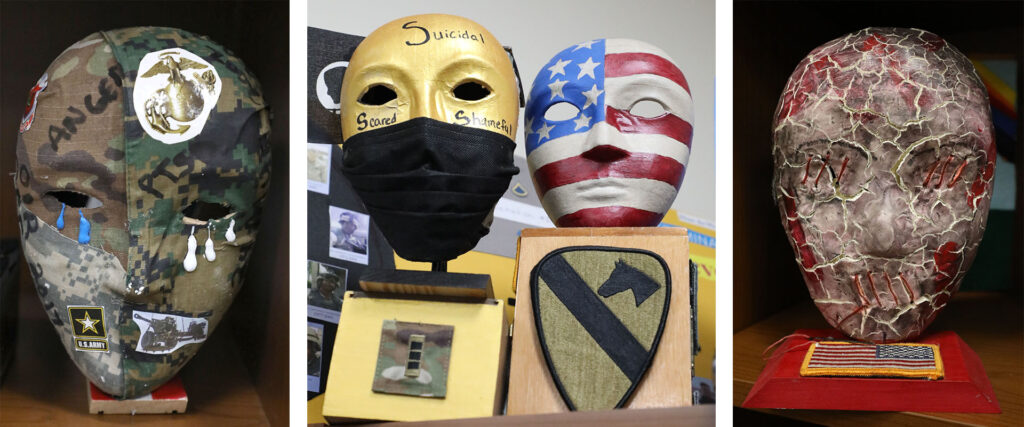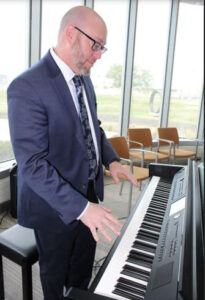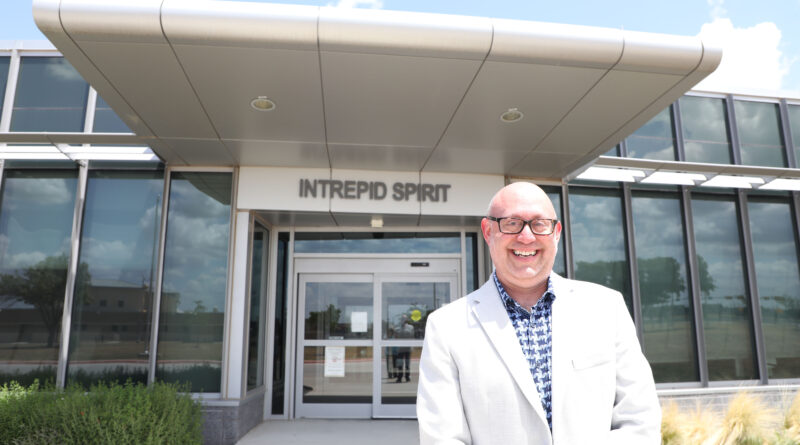Invisible Wounds of War
Intrepid Center helps local veterans find relief
Story and photos by BRANDY CRUZ
 After several deployments, Air Force retiree Vincent Pagano said he knew he needed help with his invisible wounds — the ones that cut the deepest in military personnel. It was only after seeking treatment at Fort Cavazos’ Intrepid Spirit Center that he finally found relief.
After several deployments, Air Force retiree Vincent Pagano said he knew he needed help with his invisible wounds — the ones that cut the deepest in military personnel. It was only after seeking treatment at Fort Cavazos’ Intrepid Spirit Center that he finally found relief.
“Just because we don’t see our service members fighting on the news in theater, doesn’t mean our service members — active duty and veterans — are not fighting a war,” Dr. Scot Engel, director of the Intrepid Spirit Center at Fort Cavazos, explained. “We would suggest that the enemy metaphorically has embedded itself into the mind, body, spirit and soul of the warrior. When the warrior gets off the plane and comes home, they don’t come home alone. There is a war within that’s happening and that metaphorical enemy has an end state objective, which is to isolate, marginalize, stigmatize, and then have the service member take their own life.”
Helping service members like Pagano win the fight internally is the goal of the Intrepid Spirit Center, one of 10 facilities located strategically across the country to help troops overcome the multi-systemic syndrome the treatment team references as a consequence of war syndrome.
The 25,000-square-foot facility, located across the street from Carl R. Darnall Army Medical Center, was created through a partnership between the Intrepid Fallen Heroes Fund and the Department of Defense.
“When at war, the service member is constantly vigilant and constantly under siege. There are threats that are external and internal, and as a result, what we see happening is there is a central nervous system vulnerability. As a result, the service member’s central nervous system becomes deregulated and they continue to operate at home as they did down range. Individuals are not sleeping because there is a fear that if they fall asleep, they may not wake up,” Engel said. “As a result of that, people were not able to optimally function to the degree that perhaps they were trained to. When service members came back, there was no place for them to go that had specialty areas to understand what was going on.”

Pagano said that is one of the issues he faced, so when Engel and the Intrepid Spirit Center invited him to join one of their six-week programs, he jumped at the opportunity.
“They took all these disparate individuals, brought them together and really assessed what level you could do based on the challenges you had,” Pagano said. “By the end of the six weeks, I felt better than I had in years.”
Engel said they use a holistic, interdisciplinary model to work with a service member, not just in one area, but as a whole person. In order to help them, they first had to figure out what was causing injury to the service members. What they discovered was the injuries were far more comprehensive and significant than initially thought, affecting the psychological, emotional, physical and cognitive functioning of the individual. Normally, it would take doctors months to years to address the multiple symptoms one by one, but through this unique facility, the doctors are able to target all the symptoms at once.
“The goal here is to provide individualized, simultaneous, coordinated care within one footprint,” Engel said. “Individuals will come to the Intrepid Spirit Center and have a full-fledged 360-degree evaluation and from that evaluation we will develop an individualized master treatment plan that will be implemented by a host of well-trained providers.”
“The thing that I liked the most was how quickly they could react,” Pagano added. “If there was something identified during a session, they could literally have you seeing a specialist that afternoon.”
Pagano shared that the sessions he thought were going to be useless turned out to be the most therapeutic. Using holistic approaches such as group therapy, music therapy, art, music and yoga, service members are able to find a release for all the issues that plagued them internally.
Although he admitted that a bunch of men sitting around talking about their feelings did not appeal to anyone, he realized through the sessions that he was not alone. Other service members were dealing with the same types of issues, thoughts and feelings he was.
“We all helped each other to not only normalize what we had gone through, but provide that positive affirmation,” he said.
 Through art therapy, he said he was able to pour all his emotions into his art, which was a great relief. He said some of the things he created are now on display in his home.
Through art therapy, he said he was able to pour all his emotions into his art, which was a great relief. He said some of the things he created are now on display in his home.
“The music therapy, I kind of laughed because honestly, you don’t understand what this is doing. But it’s returning your body to do something it’s not used to, with people you’re not used to. It has the ability to get your mind away from all the bad things and focus on something fresh and new,” he said. “They had us do yoga a few times a week. Everyone was apprehensive at first, but by the end of the six weeks, those were the sessions we would look forward to the most. It was like time that you had that you got to take for yourself. You allowed yourself to go in with a sense of vulnerability, turn off your mind from all your worries and for that 30 or 45 minutes, your sole focus was on the absence of thought.”
Engel said what makes the program so unique and beneficial is because they’re no longer working blindly. They now have a “conceptual framework to better understand the consequence of war.
“If you don’t know where your target is in treatment, then how are you ever supposed to win? Cause you’re just shooting in the dark. Now we’ve found a target to shoot at and we combine our efforts to figure out what is necessary for victory,” Engel added. “The bottom line is, the service member is not broken, not defective, not inadequate. The enemy, metaphorically within, would like them to feel that way, because it furthers their end-state. We have to remember that we have an enduring responsibility as Americans, if we send individuals off to war, we have to take care of them when they come back.”



